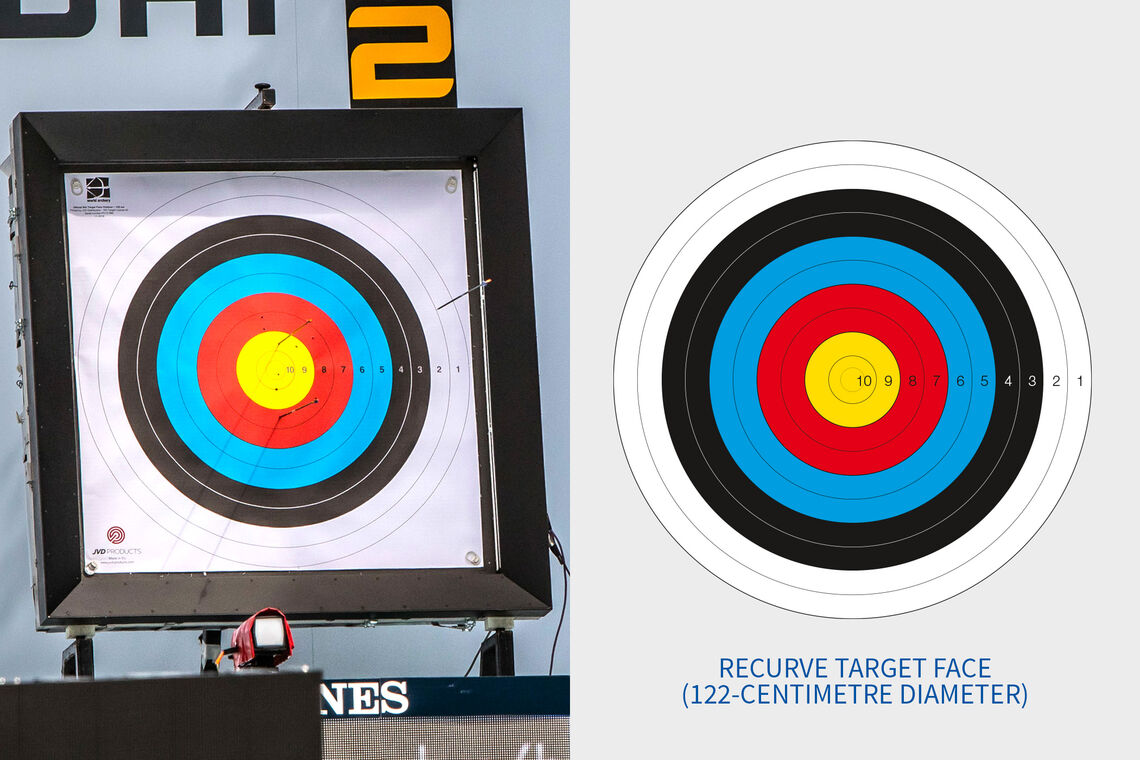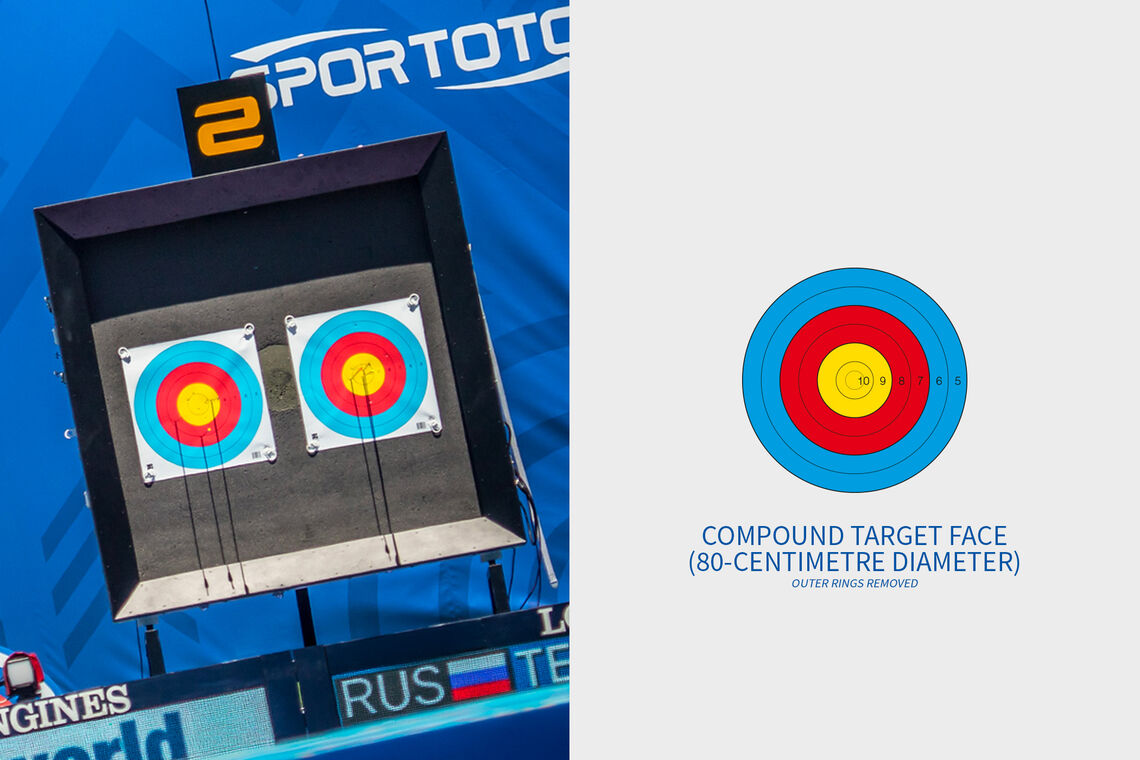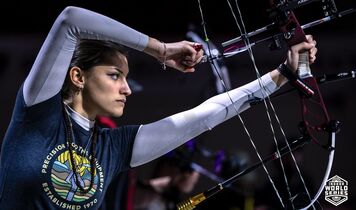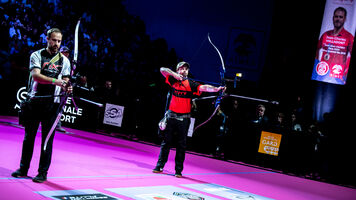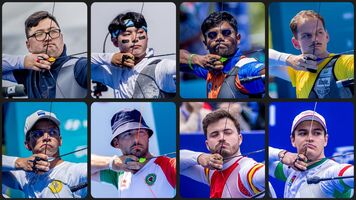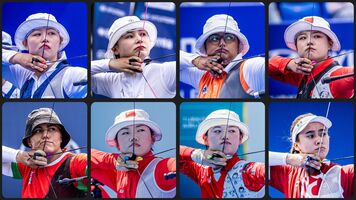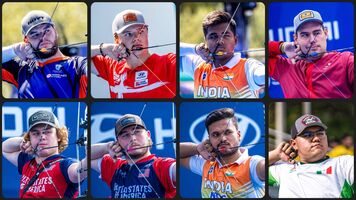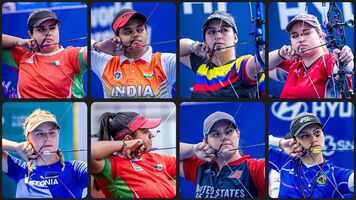Beginners guide to archery at the Krakow 2023 European Games
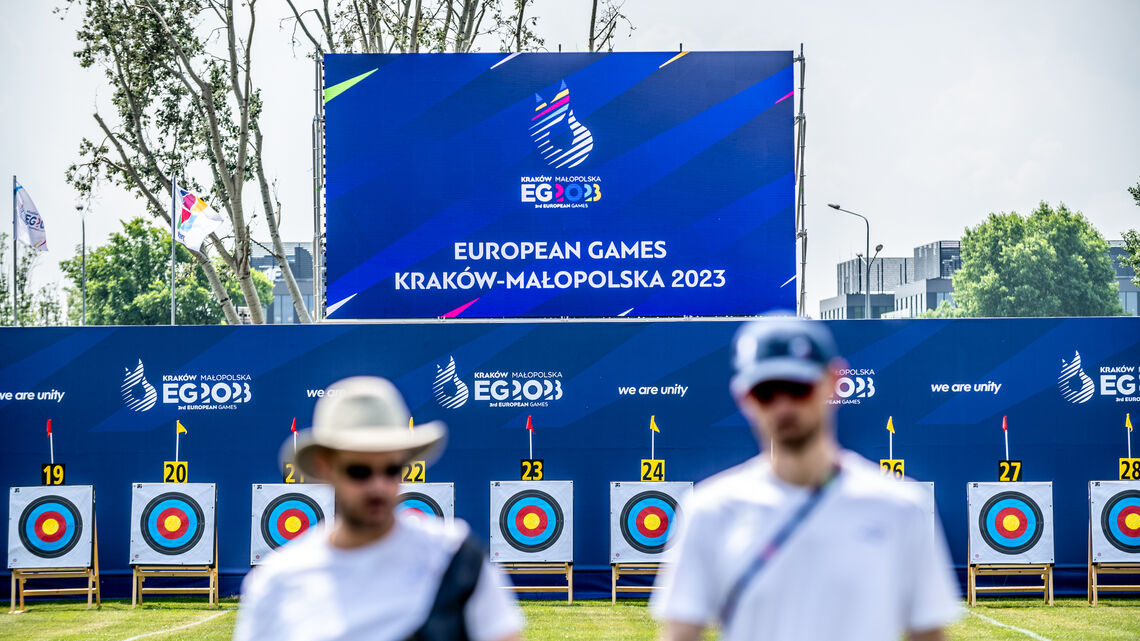
The Polish city of Krakow hosts the third European Games next week, with the archery competitions taking place at a renovated archery field – featuring 1000-seat spectator stands – in the Plaszow region of the city.
Italy dominated when the event was held four years ago in Minsk, where Mauro Nespoli and Tatiana Andreoli took the individual titles.
Compound made its European multisport debut at that tournament. World number one Mike Schloesser returns to defend his inaugural title this time around, while the compound women’s event will have a new champion – Toja Ellison is not competing in Krakow.
Great Britain’s pair of top-ranked women, Ella Gibson and Penny Healey, will take to the line.
Olympic Champion Mete Gazoz is among the 93 recurve archers looking to secure one of the six early quota places for the next Olympic Games on offer.
Key information
What’s happening? The archery competitions at the third edition of the European Games on 23-29 June 2023 at Plaszowianka Archery Park in Krakow, Poland.
What’s at stake? Eight European Games Champion titles – two individual, two team and one mixed team in the recurve categories; two individual and one mixed team in the compound categories – and six quota places for the Paris 2024 Olympic Games.
Who’s competing? A total of 124 archers – 63 men and 61 women – from 36 countries, with 93 competing in the recurve and 31 in the compound events.
What’s the story? Now an established – and important – fixture on the international calendar in its own right, the European Games also (unofficially) begin the qualification process for the Paris 2024 Olympics. The six quotas won next week in Krakow won’t officially be awarded until after August’s Hyundai World Archery Championships – but the recurve mixed team and individual champions will have already secured tickets to the Games.
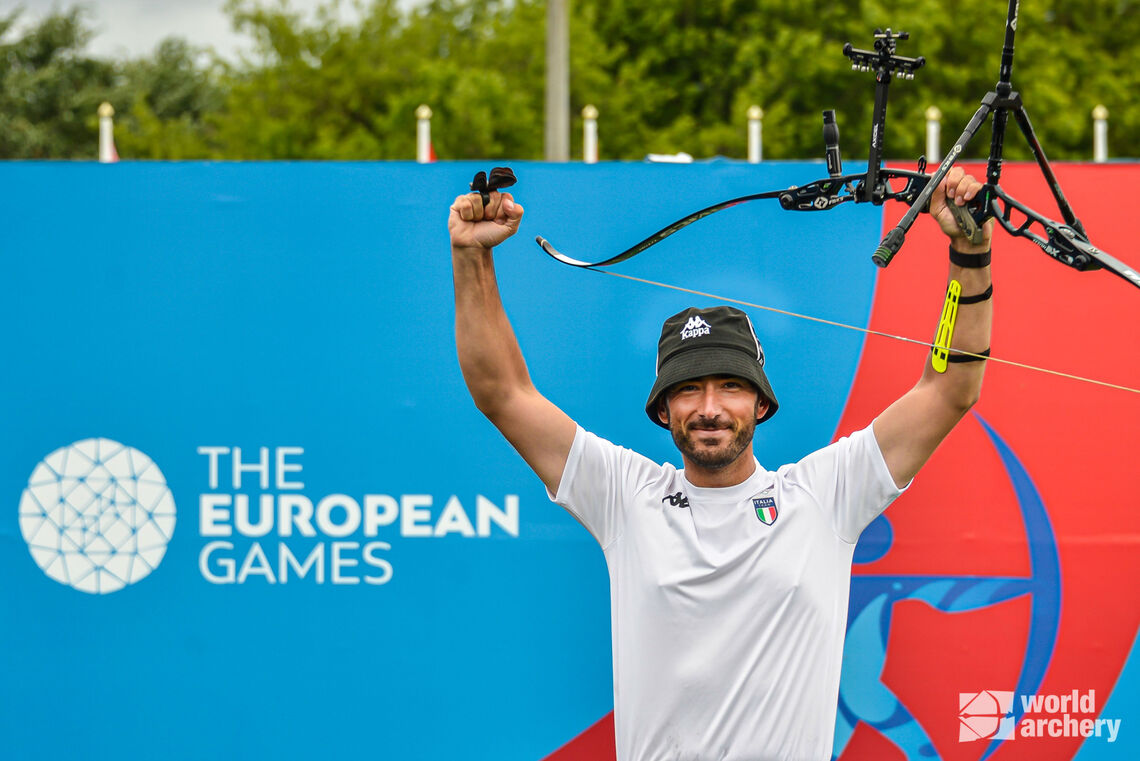
Defending champions
- Recurve men: Mauro Nespoli, Italy
- Recurve women: Tatiana Andreoli, Italy
- Recurve men’s team: France
- Recurve women’s team: Italy
- Recurve mixed team: Italy
- Compound men: Mike Schloesser, Netherlands
- Compound women: Toja Ellison, Slovenia (not returning)
- Compound mixed team: Russia
Event schedule
- Friday 23 June: Qualifying
- Saturday 24 June: Recurve team finals
- Sunday 25 June: Mixed team finals
- Monday 26 June: Eliminations
- Tuesday 27 June: Eliminations
- Wednesday 28 June: Women’s finals
- Thursday 29 June: Men’s finals

The line-up
These are the top-ranked individual archers competing in Krakow:
- Recurve men: Miguel Alvarino, Spain (world rank: 3)
- Recurve women: Penny Healey, Great Britain (world rank: 1)
- Compound men: Mike Schloesser, Netherlands (world rank: 1)
- Compound women: Ella Gibson, Great Britain (world rank: 1)
These are the nations that will contest each of the four team medals:
Recurve men’s team (8): France, Great Britain, Italy, Netherlands, Poland, Spain, Switzerland and Ukraine.
Recurve women’s team (8): Denmark, Germany, Great Britain, France, Italy, Poland, Slovenia and Türkiye.
Recurve mixed team (25): Austria, Belgium, Bulgaria, Cyprus, Czech Republic, Denmark, Finland, France, Germany, Great Britain, Greece, Ireland, Israel, Italy, Moldova, Netherlands, Poland, Romania, Slovakia, Slovenia, Spain, Sweden, Switzerland, Türkiye and Ukraine.
Compound mixed team (9): Denmark, Estonia, France, Germany, Italy, Netherlands, Poland, Spain and Türkiye.
Check the 2023 European Games event page for the full list of athletes.

Storylines
1) Olympic qualifying. It’s impossible to overstate the importance of winning coveted Olympic places – especially early in the process. There are only four available in Krakow, and 93 archers with sights set on them. The winner of the mixed team event will receive two quota places, one in each gender, with four more (two per gender) available in each of the individual competitions (but not to the same country). None of these places will become official until after the 2023 Hyundai World Archery Championships, when the spots could be reassigned further down the final ranking list should those who win spaces in Krakow ultimately win spots at the worlds instead. (The championships take priority.)
2) The dominant nation? It classes as a surprise that Italy had such success four years ago in Minsk. The nation had long been one of the more medalling of the European countries but appeared to drop off the podiums after the world championships in 2017. Defending individual (and mixed team) champion Mauro Nespoli remains one of the world’s best (and just picked up a stage win on the Hyundai Archery World Cup in Medellin) – and Italy will need a big result from The Nesp, should the team have any hope of repeating its five-medal performance of four years ago.
3) Compound’s bid for LA. Not directly related to competition in Krakow – but it’ll be in the back of plenty of the compound archers’ minds. The bowstyle has bid for inclusion in the 2028 Olympics, with success at continental events – like this one – seen as one of the reasons why the time is right for a spot at the Games. Putting on a good show in Poland couldn’t hurt.
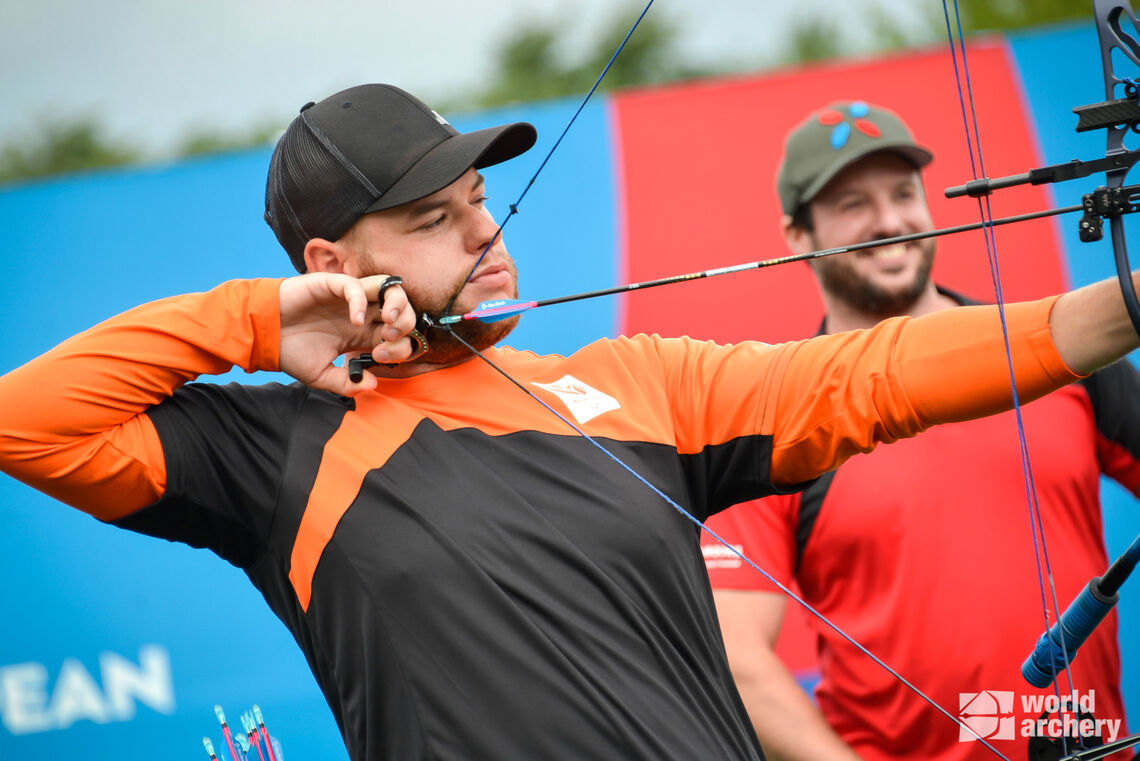
Competition format
Archers at the European Games use either a recurve or compound bow and compete in the discipline of target archery.
The recurve competitions take place over 70 metres, feature individual, mixed team and team events, and matches are decided using the set system. The compound competitions take place over 50 metres, feature individual and mixed team events, and matches are decided using cumulative scoring.
A 72-arrow qualifying round is used to rank and seed athletes (and teams) for the matchplay phase. Archers then progress through head-to-head brackets, with the winner of a match advancing and the loser eliminated, until a champion is crowned.
During recurve set system matches, the goal is to accrue a target number of set points, which is six in the individual events and five in the mixed team and team events. Individual archers shoot sets of three arrows, mixed teams (pairs) sets of four arrows (two each), and teams (three athletes) sets of six arrows (two each). The archer or team with the highest arrow score in a set is awarded two set points, or one each for a draw.
During compound cumulative scoring matches, the goal is to accrue the highest total arrow score over a set number of arrows. Individual archers shoot matches of 15 arrows, split into five ends of three, and mixed teams shoot matches of 16 arrows, split into four ends of four (two each).
Equipment
Archers competing at the European Games use a recurve or compound bow.
The recurve bow is the modern evolution of traditional bows that have existed for 1000s of years. The limbs positioned at the top and bottom of the bow curve back away from the archer at each tip. This is what gives the ‘re-curve’ its name. Recurve has been the bowstyle used at the Olympic Games since archery’s reintroduction to the programme in 1972. It has featured at the European Games since its inaugural edition in 2015.
The compound bow was invented in the 1960s as a more mechanically efficient piece of archery equipment. The design uses a levering system of pulleys and cables, making it faster and decidedly more accurate than other types of bow. Archers also use mechanical release aids and magnified sights. Compound was added to the World Archery Championships in 1995. It has featured at the European Games since the second edition in 2019.
Competition at the 2023 European Games starts with qualifying on Friday 23 June 2023.

